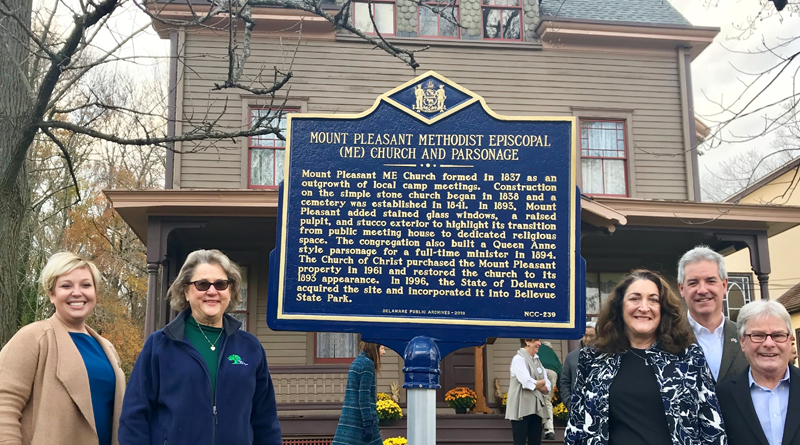In late November officials dedicated a new historical marker highlighting the history of the Mount Pleasant Meeting House in Bellevue State Park.
The meeting house is listed on the National Register of Historic Places for architectural significance. It was originally used as a public meeting house then transitioned to a dedicated religious space. Construction on the stone building began in 1838, and a cemetery was added in 1841. A Queen Anne style parsonage was constructed in 1894. Numerous improvements and restoration work have occurred since then. The Church of Christ purchased the property in 1961 and restored it to its 1893 appearance. The state acquired the site in 1996, and incorporated it into Bellevue State Park.
“The Mount Pleasant Meeting House is unique given its age and historic significance,” said DNREC Secretary Shawn M. Garvin . “We are pleased that our parks visitors can enjoy learning about this important site. One of our state parks’ goals is to make sure the public is educated about our historic and cultural treasures, and this is certainly one of them. I thank the Friends of Bellevue State Park, State Representative Debra Heffernan, and the Delaware Public Archives for their support in making this possible.”
In 2016, DNREC’s Division of Parks & Recreation completely renovated the 1894 parsonage to restore its original design, including a new roof, full window restoration, exterior siding, restoration of the front porch, and new plasterwork on the third-floor interior. Paint chip samples from the structure were color-matched, and the building was repainted in its original colors. In 2017, the Meeting House received a new cedar shake roof, and plans are in place to restore its large stained glass windows.
The restoration work was coordinated by DNREC in partnership with the Friends of Bellevue, which secured grants for the work from the Longwood Foundation, Crystal Trust and the Crestlea Foundation. The Delaware Public Archives administers the state’s Historical Markers Program. The new historical marker was funded by Representative Heffernan.
Source: DNREC

